
Butterflies may get most of the adulation, but I maintain that moths are marvel-worthy, too. We have so many different kinds around the farm that it’s mind-boggling; here are just a few that showcase the incredible camouflage skills that moths possess.
The first moth was a big one, at least a few inches long, and solid. Mr. fMf (AKA Patrick) saw this one when he was moving metal posts to relocate the goose pasture, and he excitedly called me over to see it. It was definitely worth the hike over to that part of the pasture: I did a double-take. This moth was huge – at least several inches long, and about an inch and a half wide. The only other moth I’ve seen to date that was larger than this one was a Luna moth (a spectacularly unique insect). This particular moth was bark-colored, but was visible against the dark green metal post.
What kind of moth was it? I immediately set about researching it, and it looked similar in coloring to several, including the Dagger moth. When I came upon a photo of a Carpenterworm moth, it definitely looked promising – and when I discovered that this moth is also known as a Locust Borer moth, I knew that was likely the one. We have plentiful Black Locust trees here – and I’ve seen a Locust Borer beetle in the past – so it would be reasonable to identify this as a Locust Borer moth.
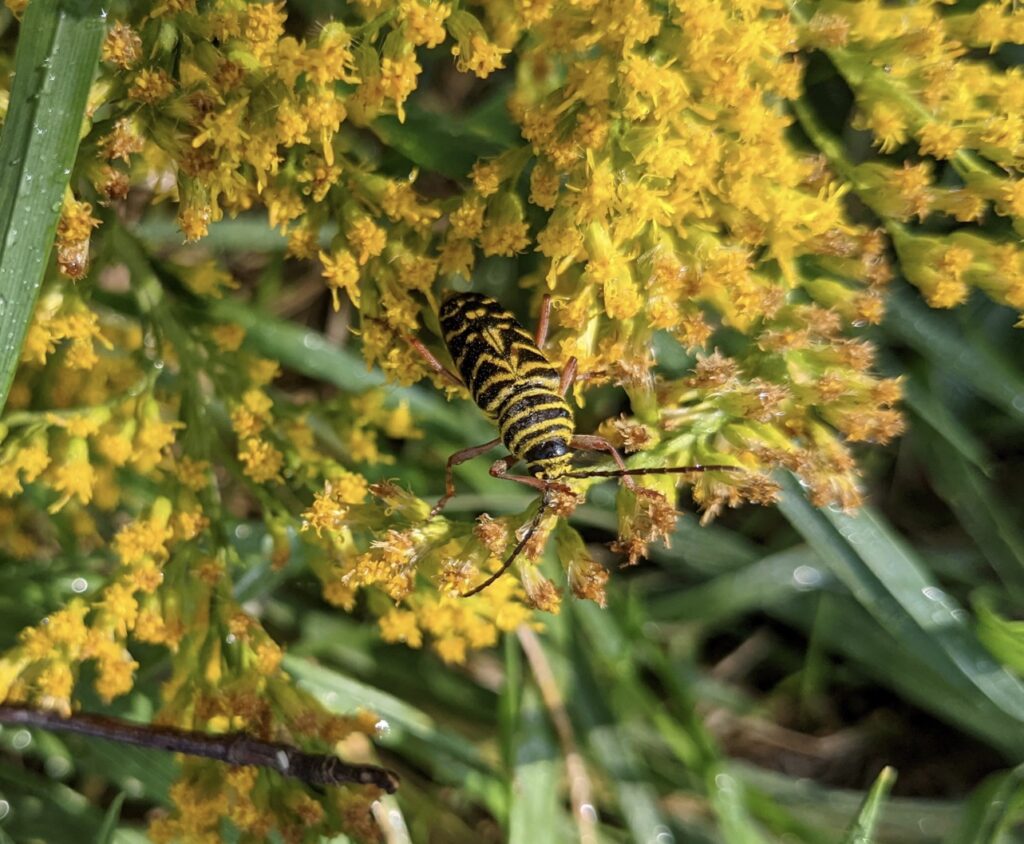
So perhaps the green metal post wasn’t the optimal spot for concealment, but if the moth had been against the trunk of a Black Locust tree, it would have virtually disappeared.
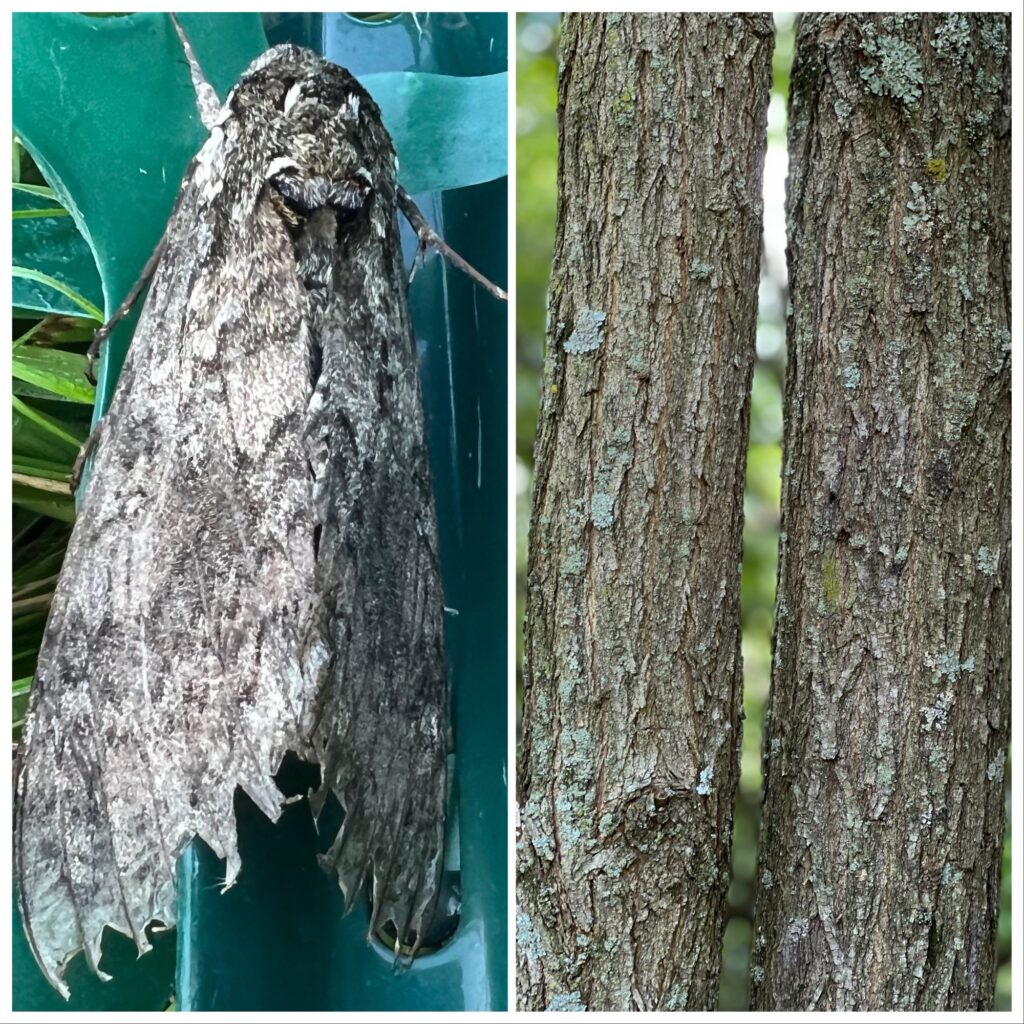
This placid moth (willingly climbing up on my glove) had big, inky eyes, and was a beautiful specimen. Note: I only moved this one because the post had to be moved, and I put it in a brushy area nearby.
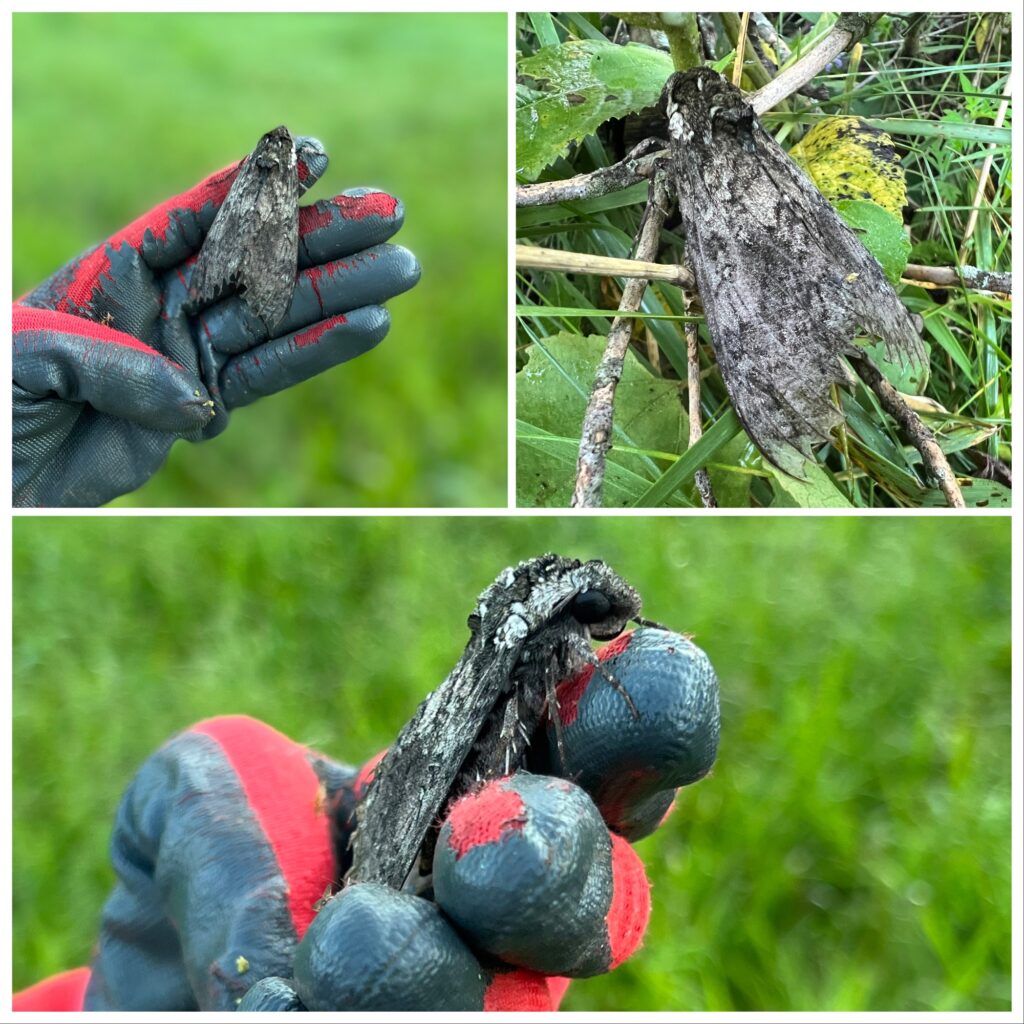
The second moth Mr. fMf noticed was much smaller, perhaps a half inch long. It was on the lid of a 5 gallon bucket, and it blended in very well even though there were dark markings at the rear of its wings. I haven’t yet identified this one, so please share if you know what kind of moth it is.
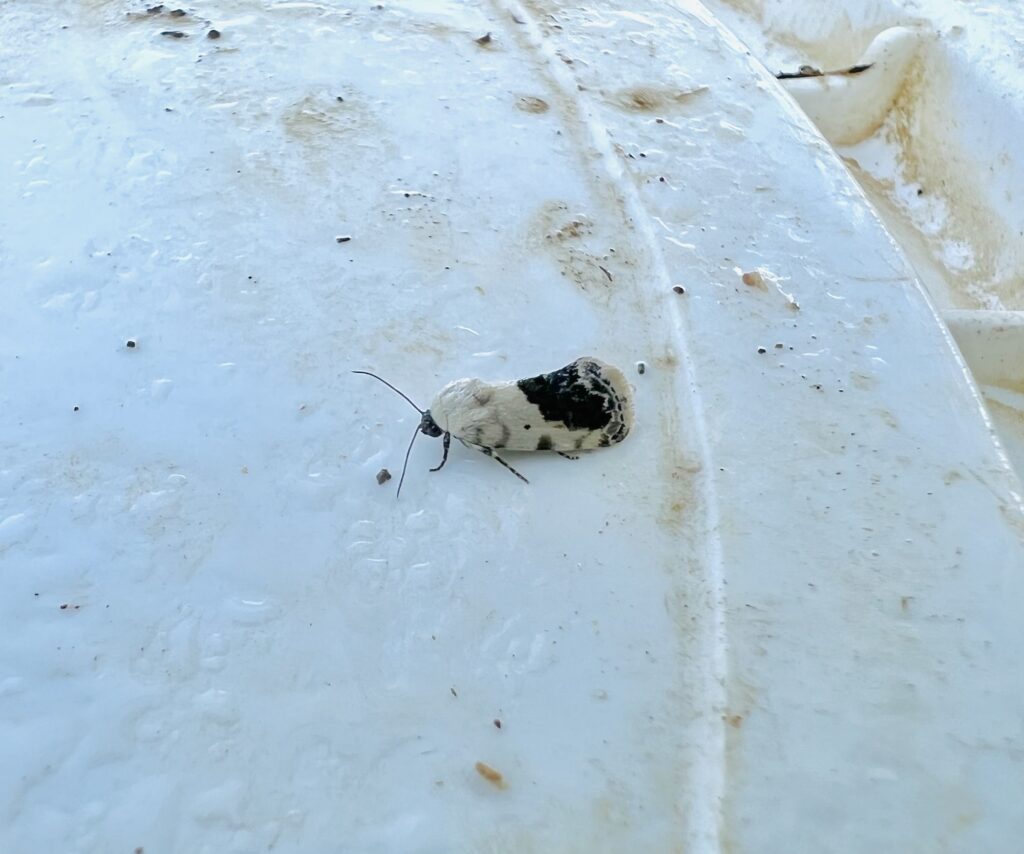
The last moth was one that I saw while preparing to hose out the geese’s water tubs. The bright yellow on the wild rose bush caught my eye, and at first I thought that it had remarkably poor camouflage…until I saw that there were dead leaves on the rose bush of very similar color and shape. As an added bonus, there was another moth clinging to the same rose bush, displaying its lemony underside.
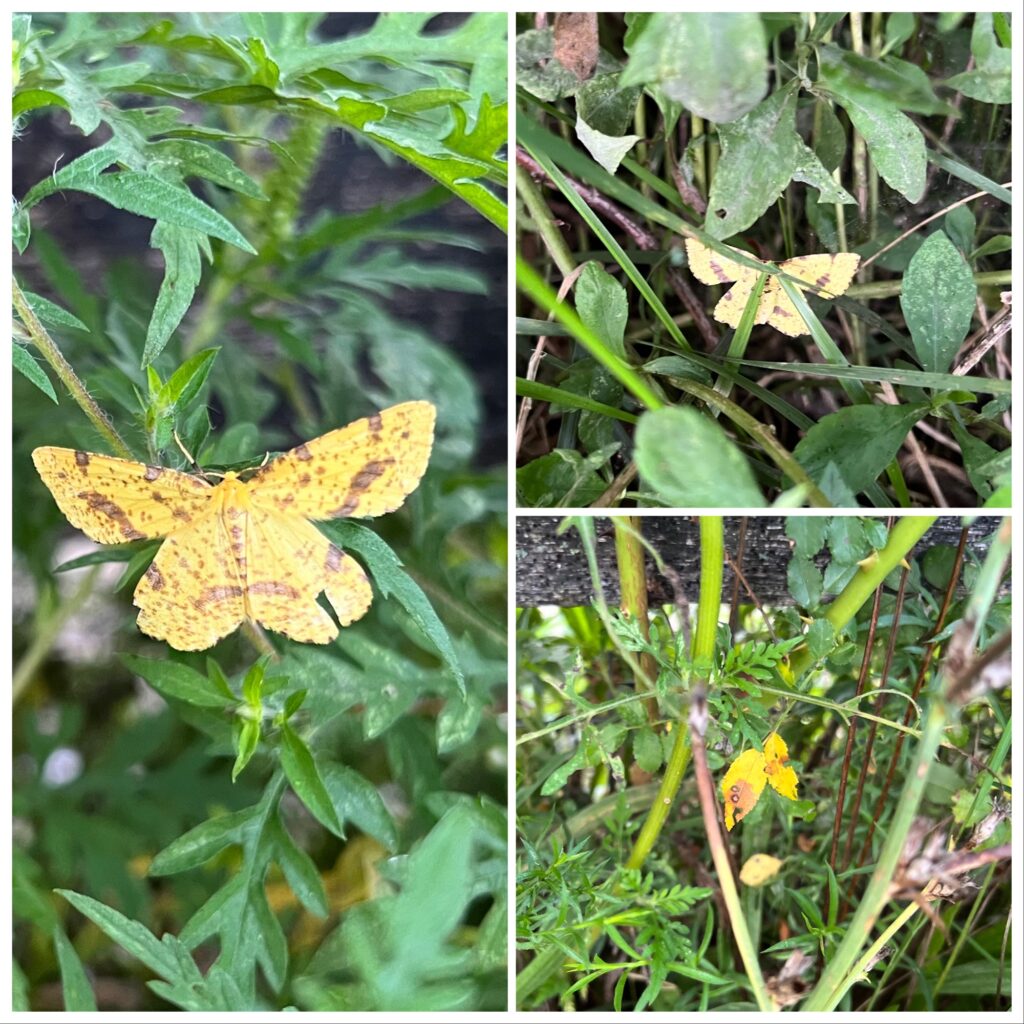
Online research suggests that this is a moth in the genus Xanthotype, probably a False Crocus Geometer. Apparently, the “false” Crocus Geometer and the (true) Crocus Geometer look so similar, they’re practically indistinguishable. A situation which, naturally, makes me wonder why not simply just call them all Crocus Geometers, if the distinction is negligible? Regardless, this is a lovely moth that, at first glance, could be mistaken for a butterfly. Nice disguise!
Did you know that moths are important not only as a food source for other animals, but as pollinators, too? And some even pollinate at night. Moths are a shining example of Nature’s artistry, and you don’t have to be a lepidopterist to appreciate their diversity and beauty – just look around, and you may find some truly amazing moths nearby.
